In my first grade classroom, we LOVE math centers! It is the perfect time for students to review math skills in an engaging, hands-on way. A question I hear a lot is: how can I differentiate math centers to meet the needs of all of my students? Today I am going to share my favorite ways to easily differentiate math centers!
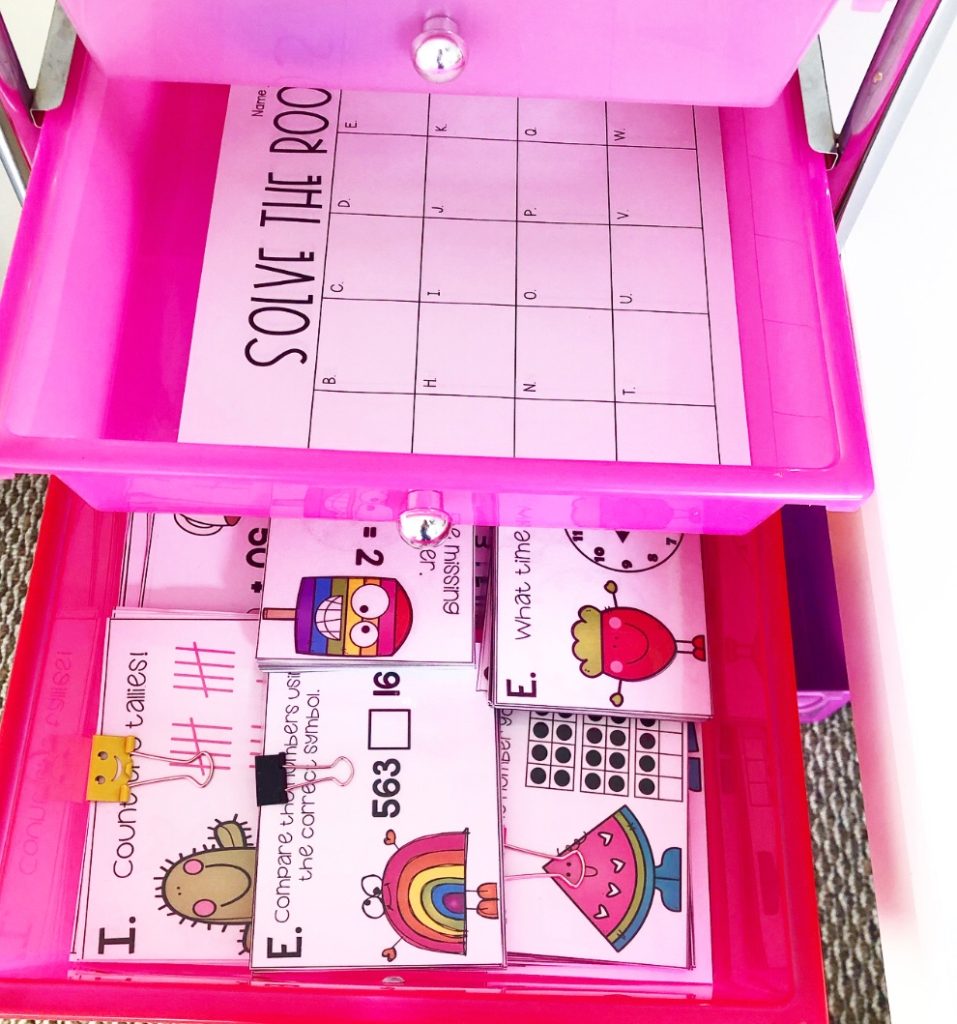
Want to learn more about how I run our Guided Math Block in 1st grade? Check out my Guided Math Blog Series:
- Part 1: Getting Started with Guided Math
- Part 2: Launching Guided Math Step-by-Step
- Part 3: Planning Mini Lessons using Weekly Routines
- Part 4: Everything you Need to Know about Small Group Math Instruction
- Part 5: Guided Math Rotations and Centers
Differentiation can feel stressful when it comes to planning! During Math centers, I want to make sure all of my students are getting exactly what they need, BUT I don’t want to spend hours each week planning and prepping math activities! I mean, no one has time for that. My motto is always find a way to work smarter, not harder! So I figured out some systems and routines to streamline my differentiation! I use tools that I already have to differentiate my math centers.
1. Color Code by Math Group
In my classroom I have 3 different math groups. These groups are ability based. For more on how I form my math groups, check out this blog post!
Each of my math groups is a different color. The colors help me to easily differentiate my materials. I use these colors with each of the different differentiation systems I’ll share about below!
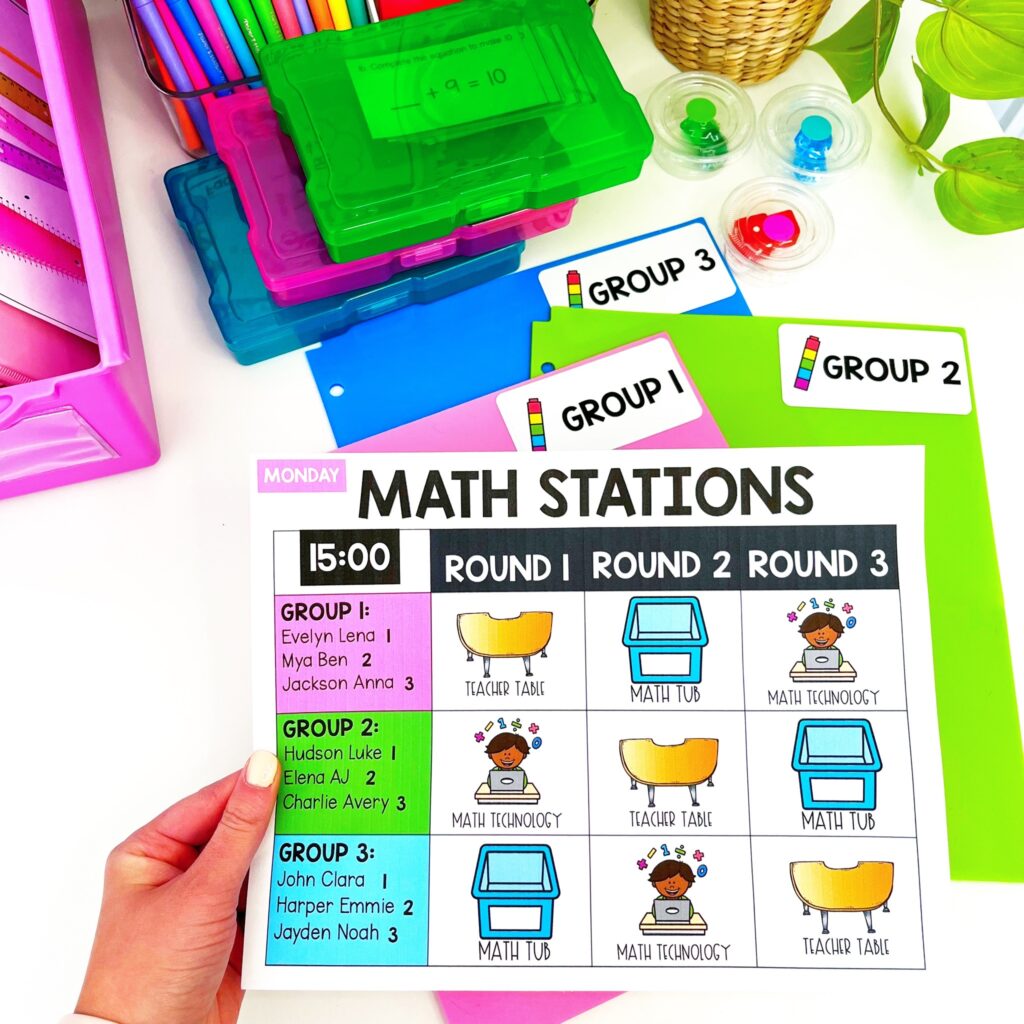
I display our math rotation board on my Smart Board each day. This allows my students to easily see which group they are in and what their group color is. My groups are flexible and change often, so having this visual reminder is so helpful! You can find my Digital Rotation Slides here!
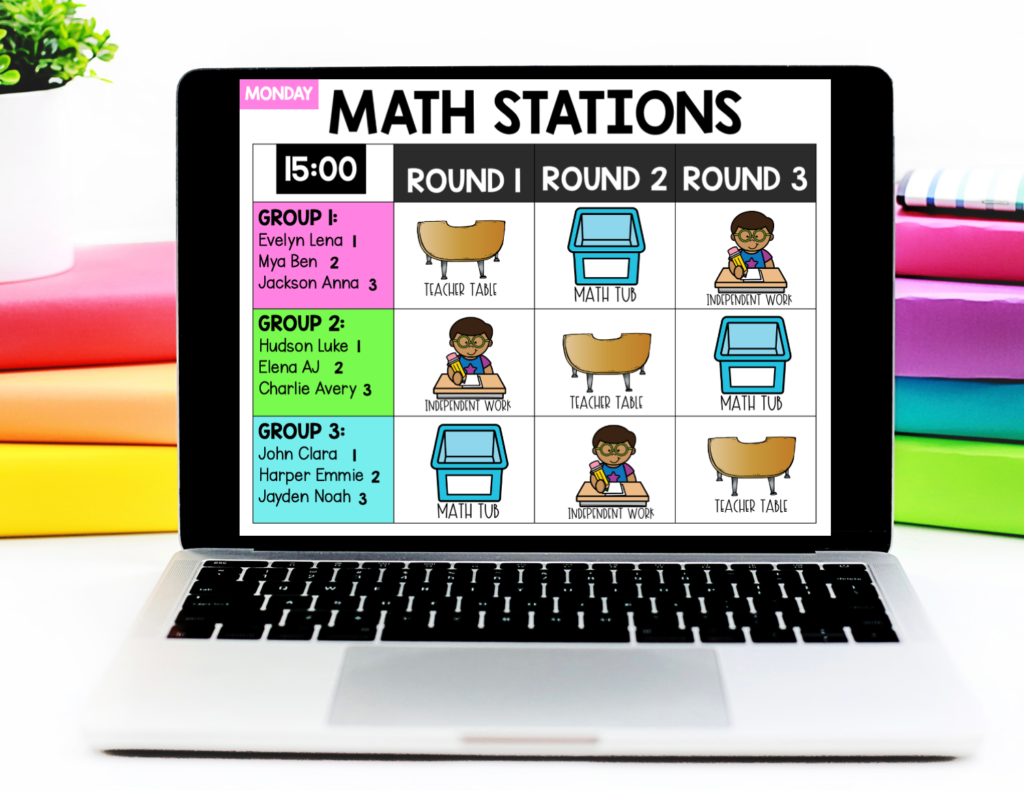
2. Use Dice to Differentiate Math Centers
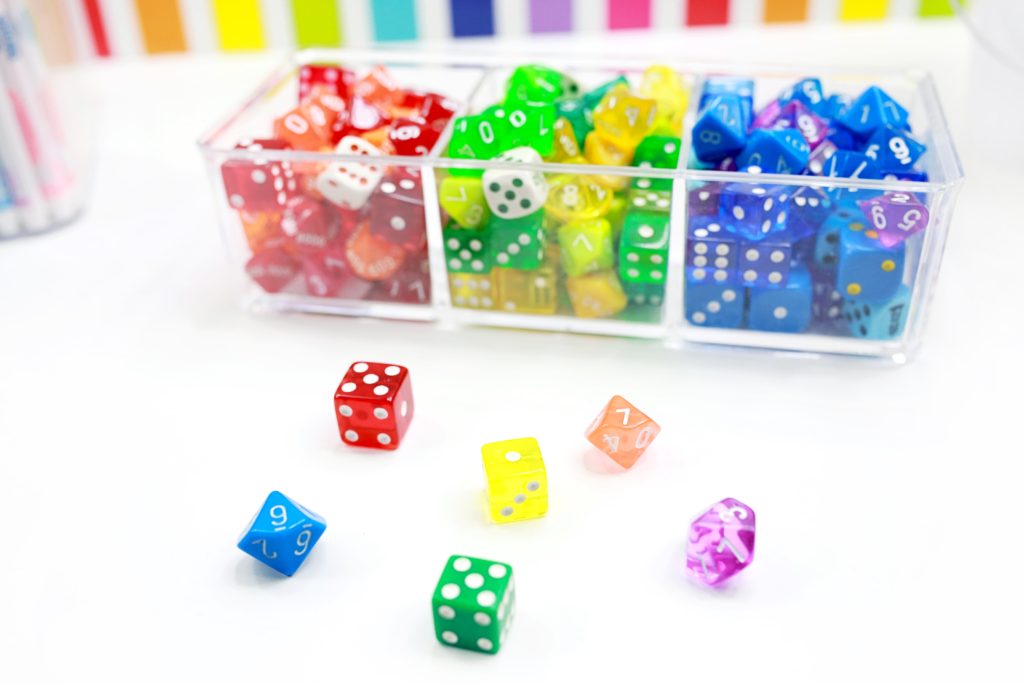
I use so many different dice math centers! I love easy, no prep centers where I can just add dice. A few years ago, I ordered a dice set from Amazon (similar to this one!)! It comes with SO my different kinds of dice. I can easily change the difficulty of a math activity and differentiate the math center by switching out which dice the kids are using.

For my kiddos that have mastered a lot of their Addition facts, I’ll use dice with larger numbers to challenge them. For my first grade friends who need more practice with facts to 10, I pull the classic 1-6 dice.
In order for my friends to know which dice to use, I try to match the color of the dice to their math group! My math groups are flexible and ability based groups so this makes it easy to organize my differentiation with colors!
So, I’ll pull blue dice for my blue group, green dice for my green group, and pink or red dice for my pink group! When I don’t have the color dice I need, I just use these little plastic cups. I put a colored dot sticker on each of the cups to match the color of my groups! Then students know to look in the cup with their group color.
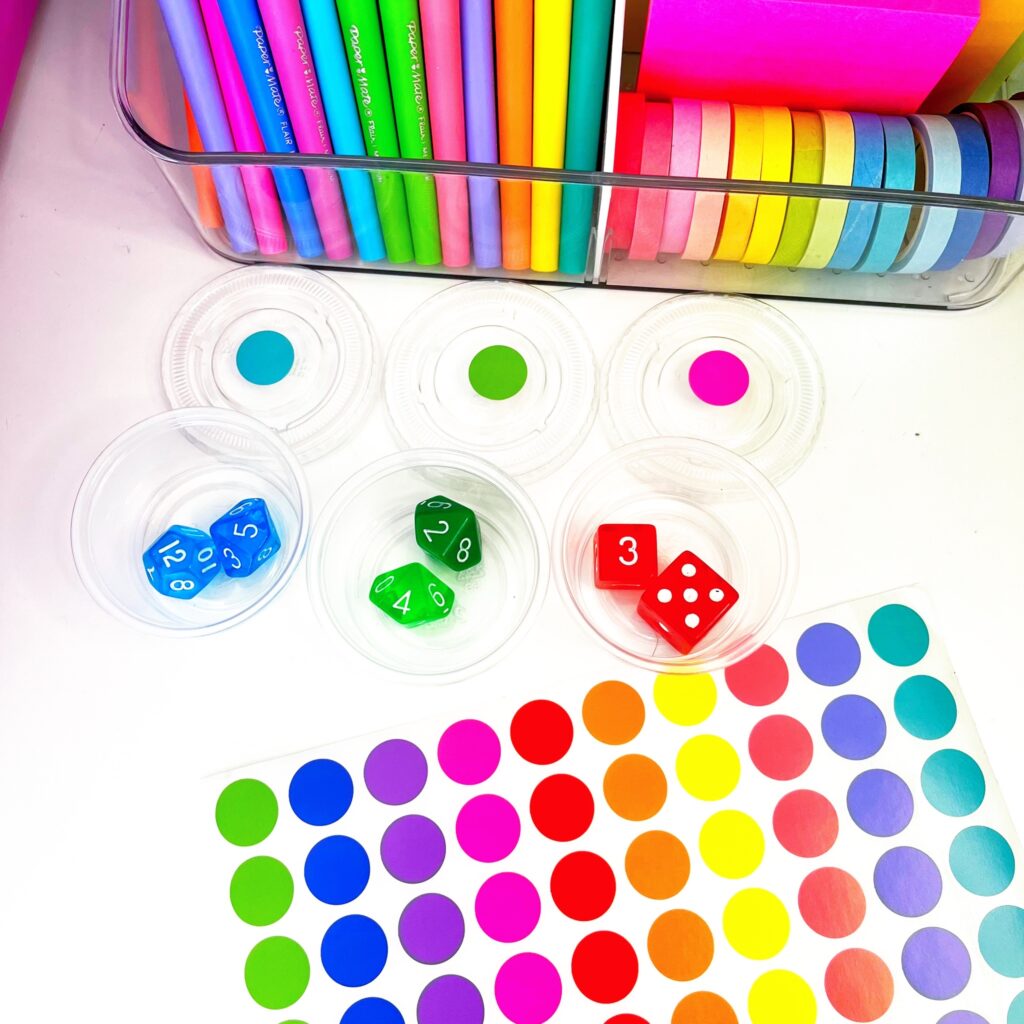
A few other activities I like using dice for:
Roll and Solve: Pretty straight forward! All students need are dice and a dry erase board/marker! They roll, add, and solve on their boards! I challenge them to see how many equations they can fit on their board! I can easily determine how big the numbers are that students are adding with dice!
Math Mats: I love repurposing the math mats that we use during our teacher table time as math centers. For many of these math mats, I just add dice so that students can play independently!
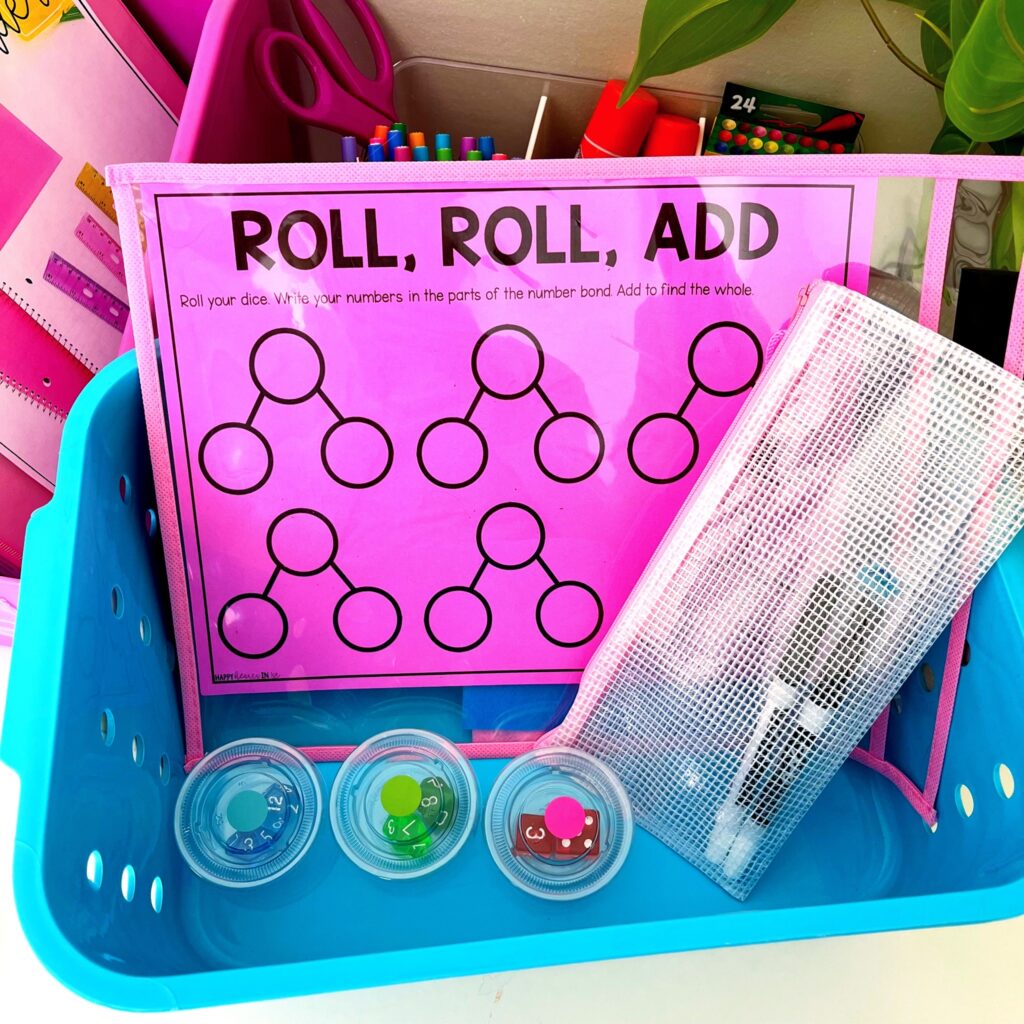
You can grab some free Addition Math Mats to use in your classroom centers here!
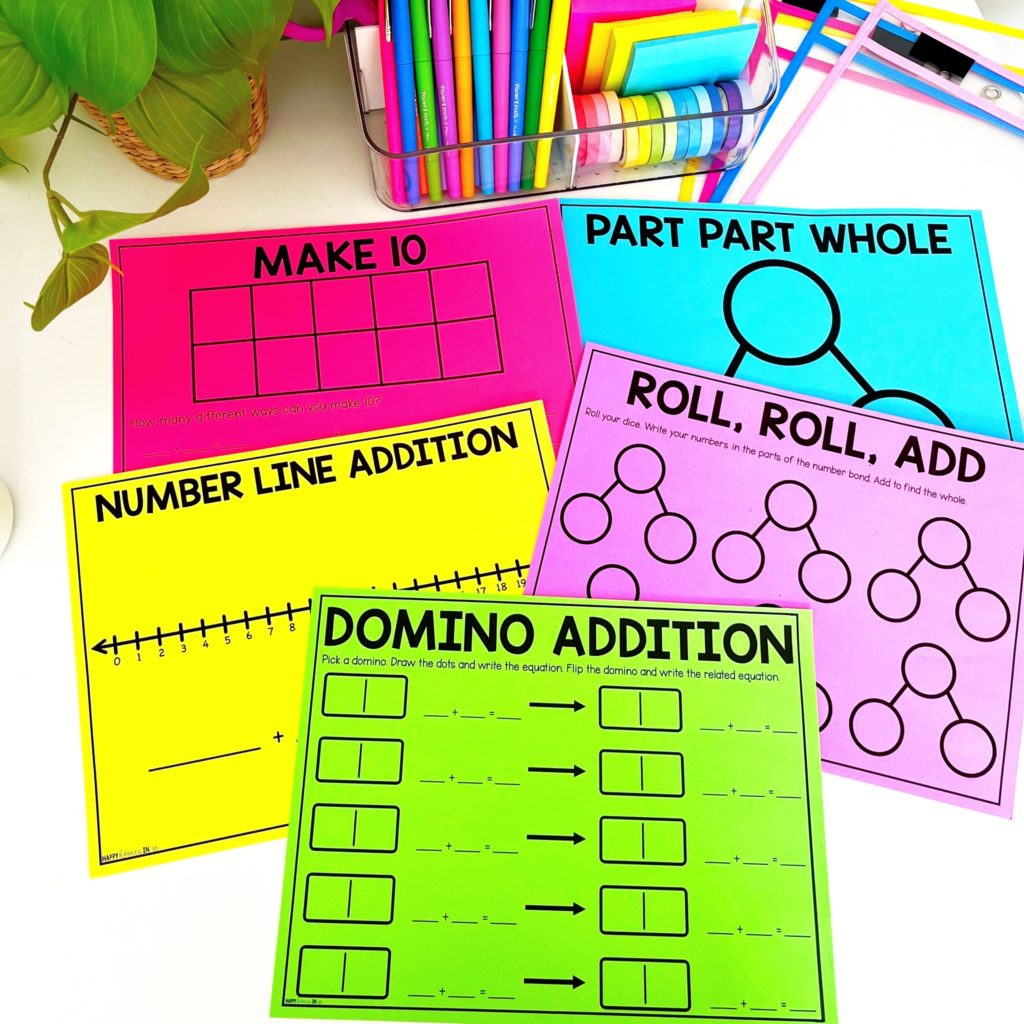
Place Value Activities: I have students roll a number using dice. They then show that number in different forms- base 10 form, word form, expanded form, etc. For my high group, I’ll put 3 dice in their plastic cup to make 3 digit numbers. My lower group will stick with 2-digit numbers!
Numberless Word Problems: I like to have students work on numberless word problems in their Problem Solving Journals! I’ll have students roll dice to determine which numbers go in the blanks. They first have to make sure that the numbers make sense with the problem, then solve!
Find Numberless Word Problems for the Year here!
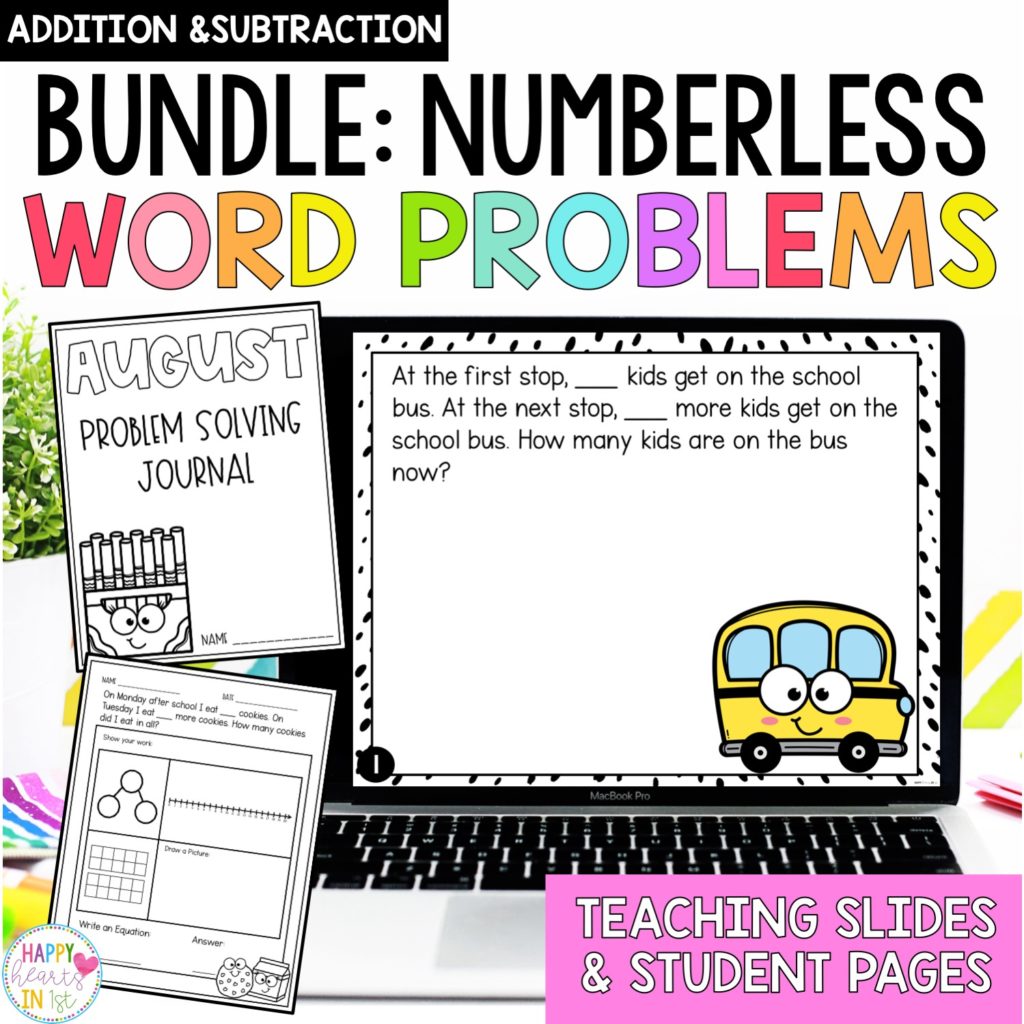
3. Use Task Cards to Differentiate Math Centers

I LOVE using task cards for math centers! I love how versatile they are and how many different ways they can be used. (See my blog post: 5 Ways to use Task Cards in the Classroom!)
I keep a set of task cards handy for almost every math skill we teach in first grade!
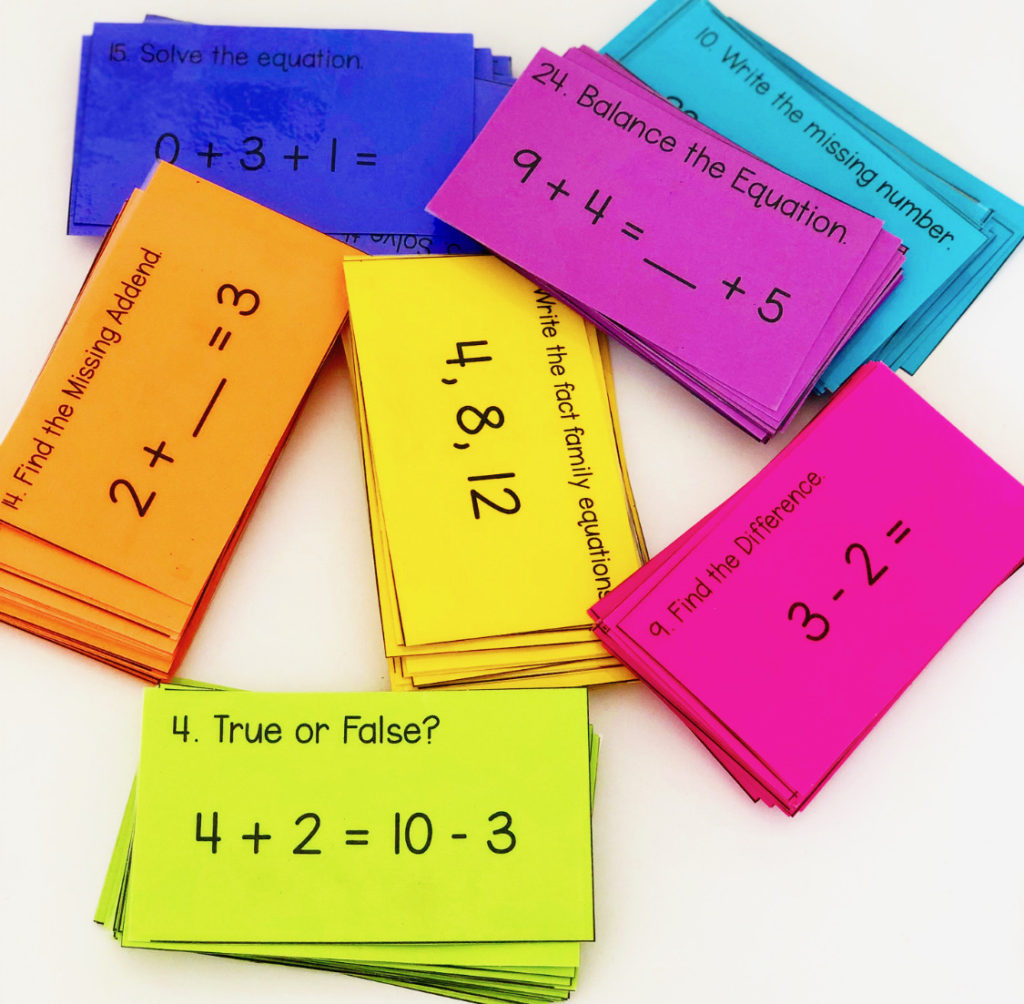
One of the best things about task cards is how easy they are to differentiate. I’ll have my students complete the same math center activity, but just switch out the task card level or skill!
For example, my higher group might be working on adding 2-digit numbers while my lower group might still need to review adding numbers to 20.
I like to use these storage boxes so students know which set of task cards to use. I have a box for each group and match the color of the boxes to the color of the math group! When students go to their math tub, they simply grab the storage box that matches their group and use the task cards to start working!
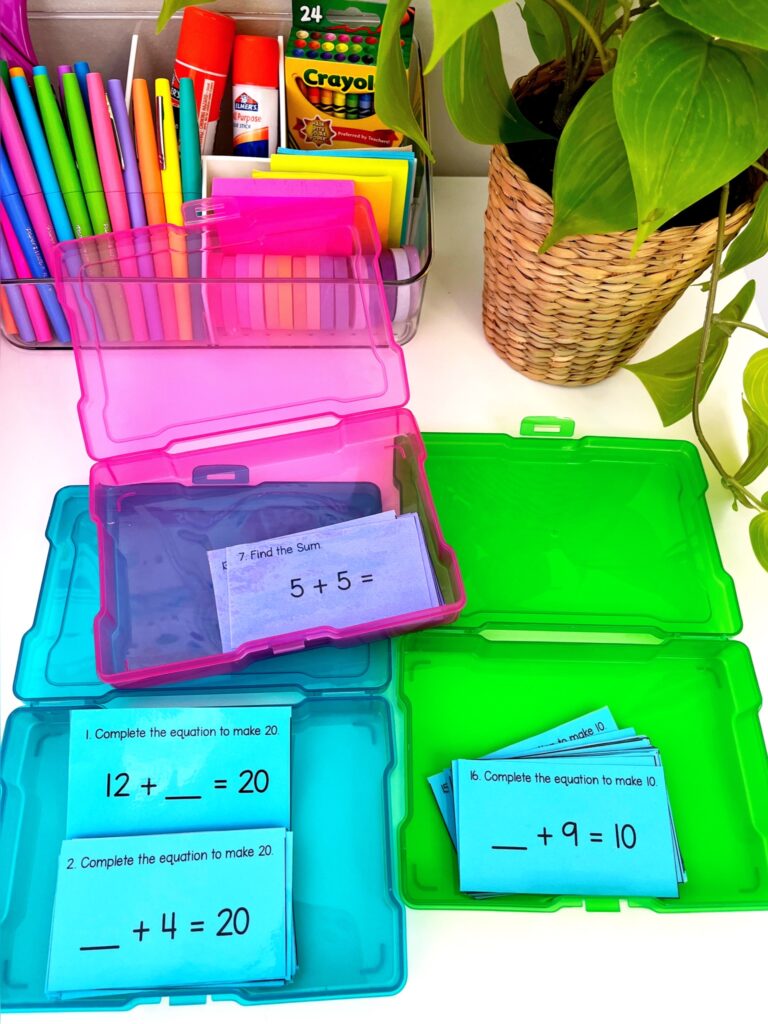
You can find one of our favorite task card math centers: Solve and Cover here!
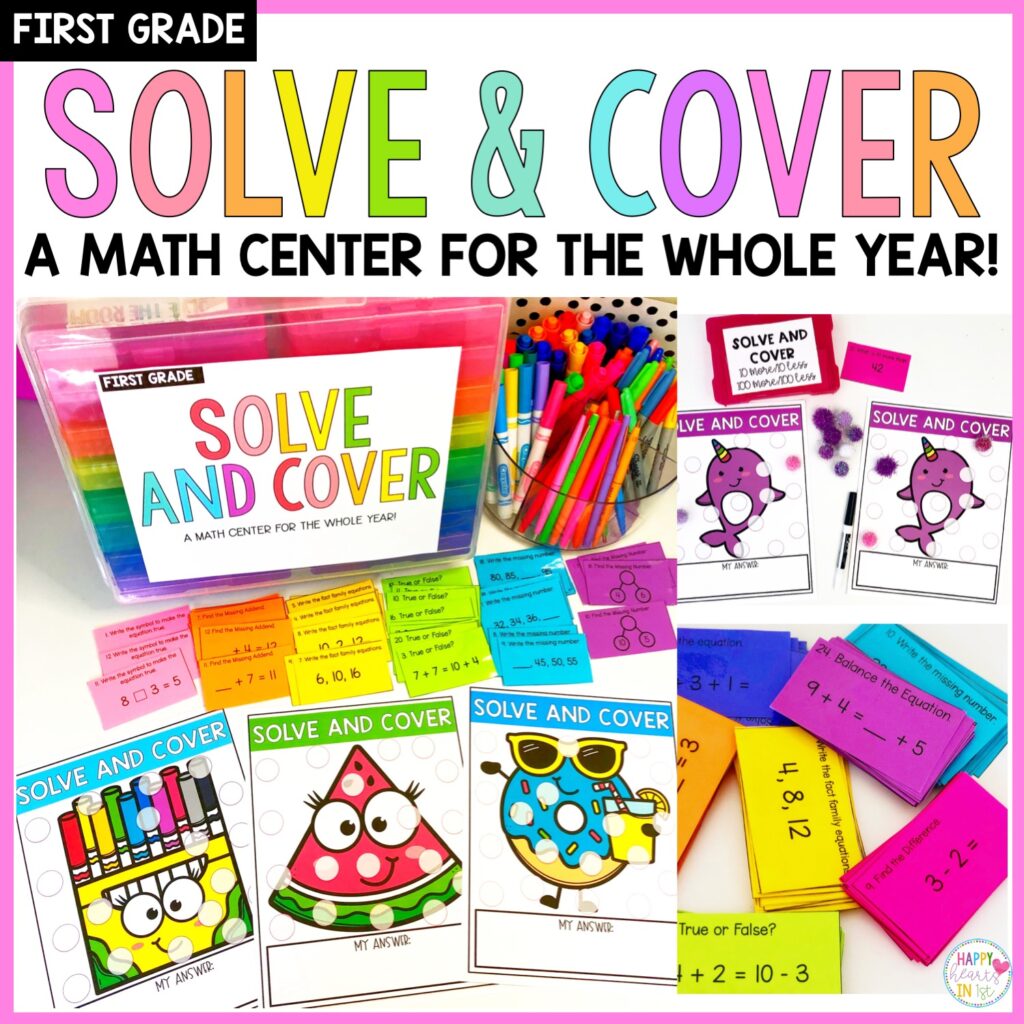
Another Task Card Center my students love is Solve the Room! Find Solve the Room for the whole year here!

4. Use Folders to Differentiate Math Centers
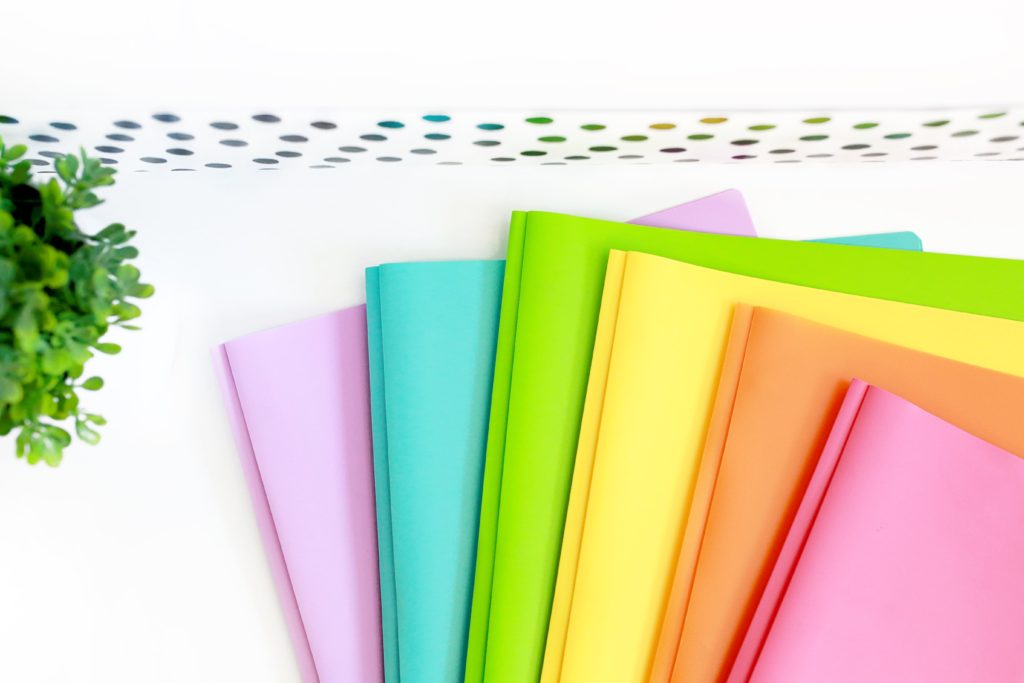
Sometimes, when I want students to complete a paper activity during math centers, I’ll put different skill levels in colored folders. When students go to the math tub, they find the folder that matches their group color.
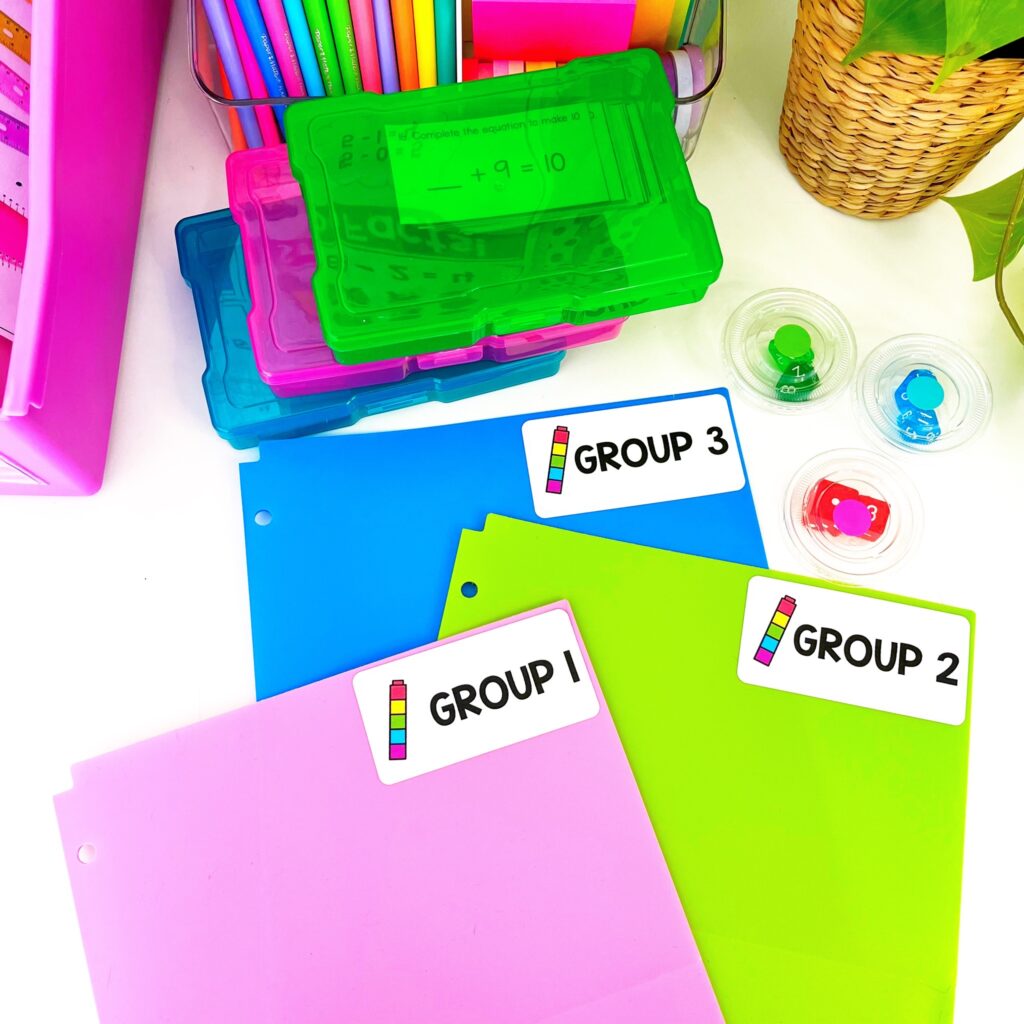
This works great for an independent work station during math centers. You can find my favorite No Prep Math Worksheets to use all year long here!
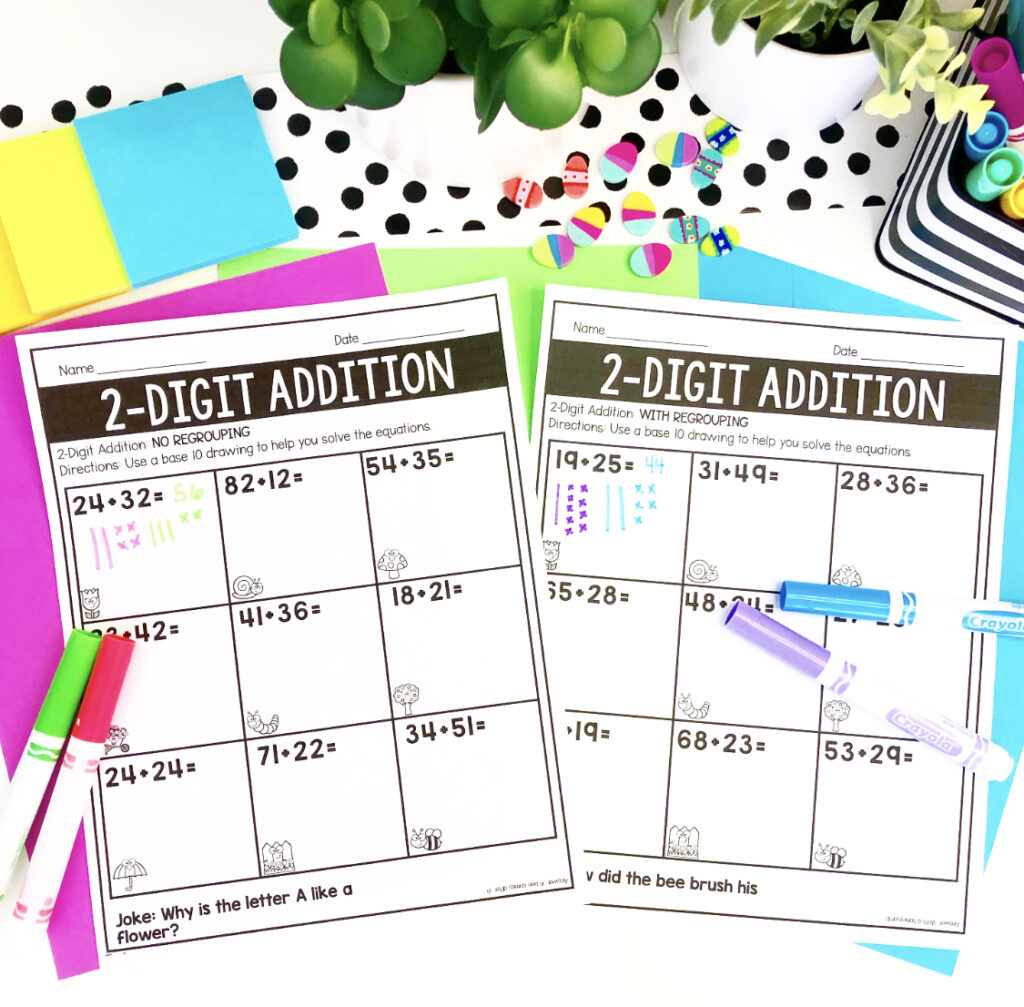
I also love using Addition and Subtraction Color by Codes for this! Students are working on the same picture, but the skill level is differentiated. Some are working on adding and subtracting within 10 and others are working on facts to 20.

You can grab Differentiated Color by Code for the whole year here! Each seasonal picture comes with 3 levels to meet the needs of all of your students!
I hope these tips gave you some differentiation ideas for your math centers! It’s all about setting up systems and routines to make your life easier. What’s your favorite easy math center differentiation idea? Let me know in the comments below!
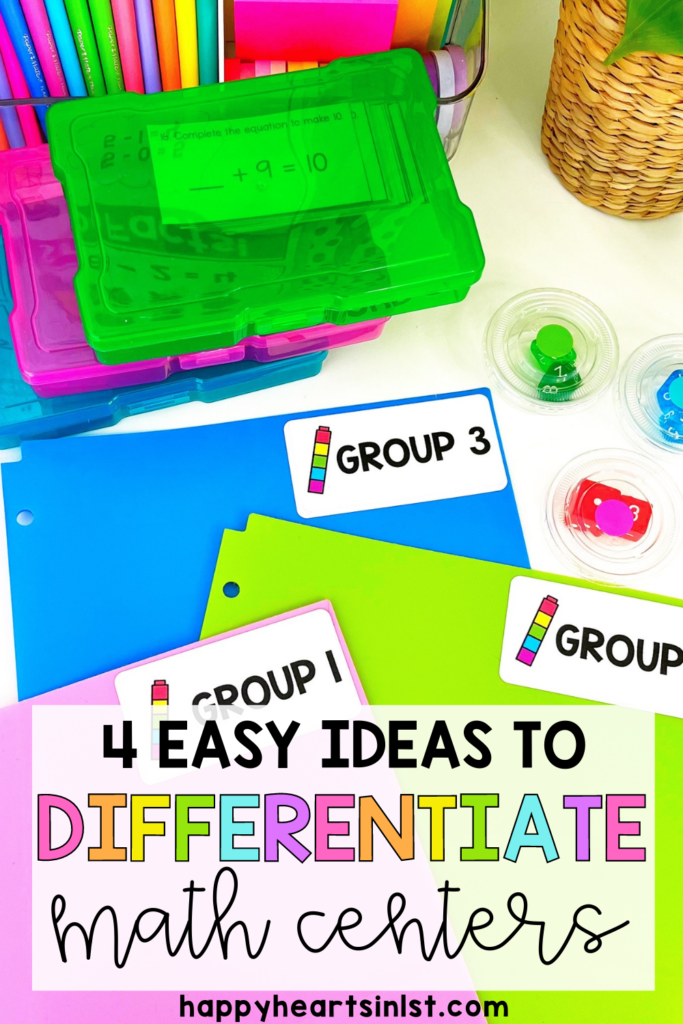

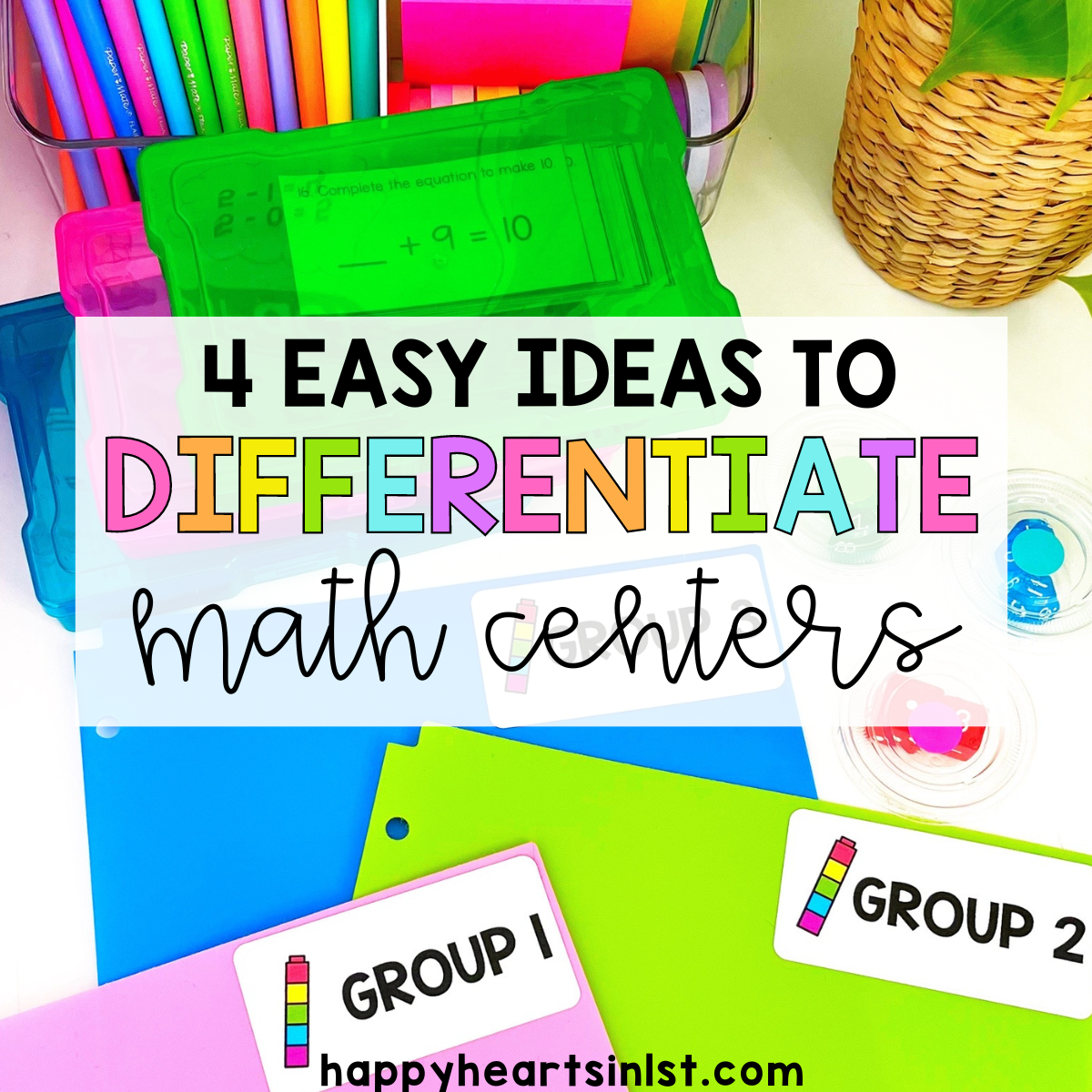


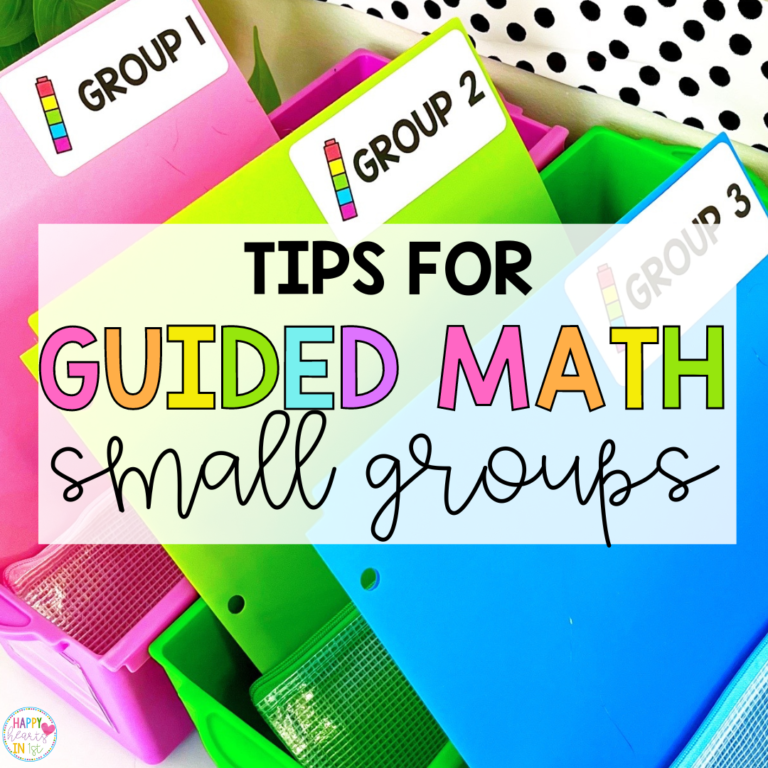

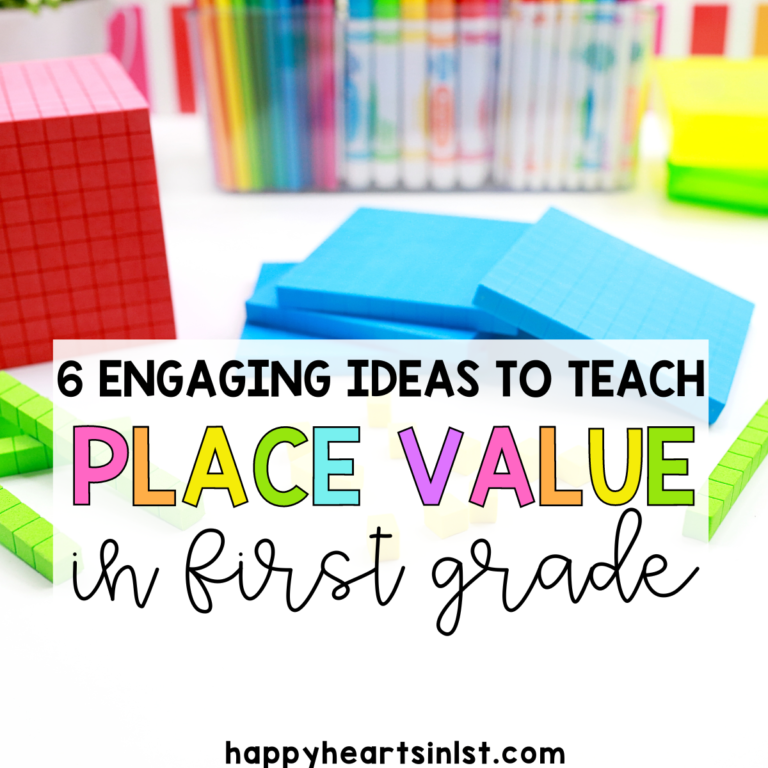
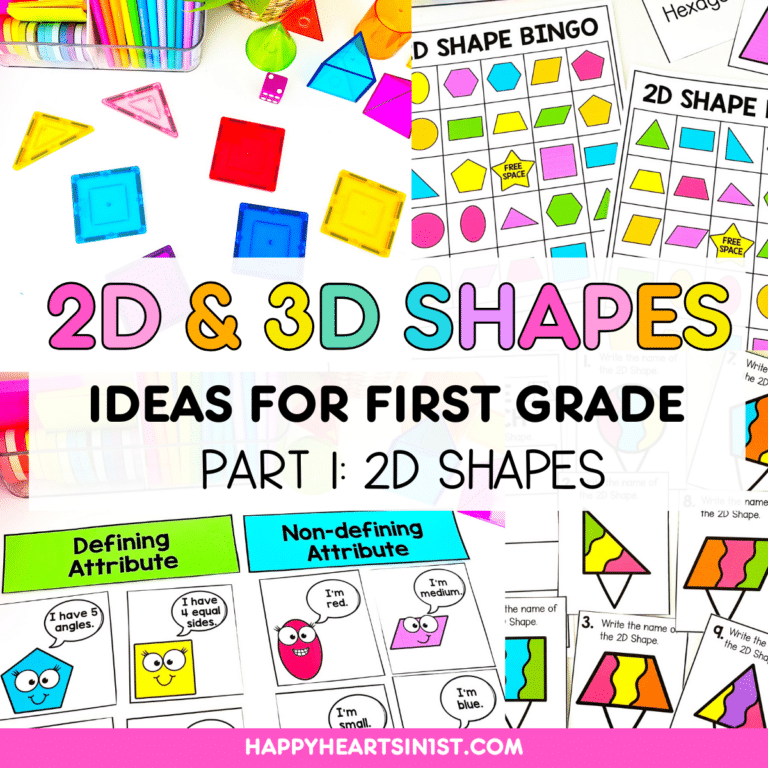

Love your work
How would you differentiate Solve the Room? Some students need cards that work with 10, and some need cards that work within 20. Any suggestions?
It’s a little more work, but you could print the black and white cards on different colors of paper. Each group could work on finding and solving their specific color 🙂